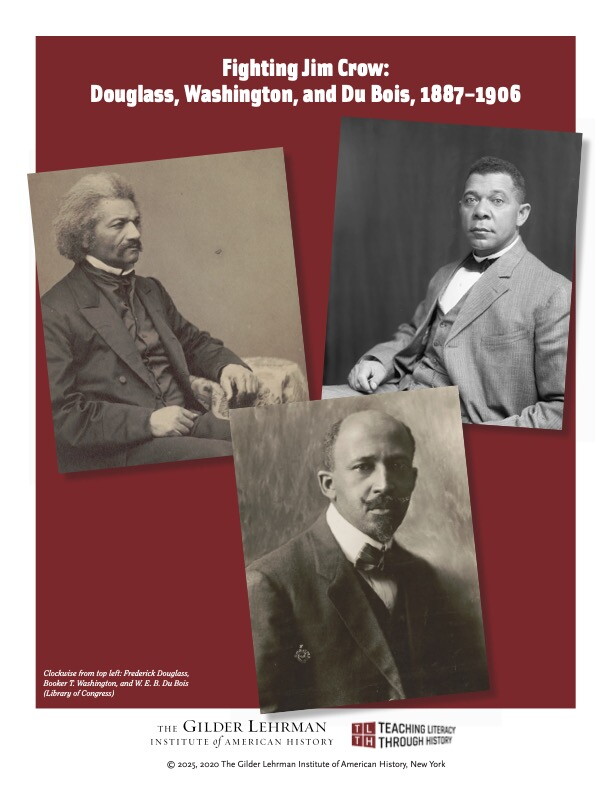Lesson by Adam Stevens
Essay by Nikki Brown, University of Kentucky
Grade Level: 7–12
Number of Class Periods: 4
Primary Era: Progressive Era to the New Era, 1900–1929

Over the course of four lessons, students will read a letter and excerpts from two speeches by leading African American men of the late nineteenth and early twentieth centuries to examine different responses to Jim Crow laws. They will use share-reading and close-reading strategies to read, understand, and summarize the main ideas in the texts and demonstrate their knowledge by answering critical thinking questions that synthesize ideas from all three texts.
Lesson Plan Author: Adam Stevens
Historical Background Essay by Nikki Brown, University of Kentucky
CCSS.ELA.LITERACY.RH.9-10.1: Cite specific textual evidence to support analysis of primary sources, attending to such features as the date and origin of the information.
CCSS.ELA-LITERACY.RH.9-10.2: Determine the central ideas or information of a primary source; provide an accurate summary of how key events or ideas develop over the course of the text.
CCSS.ELA-LITERACY.RH.9-10.4: Determine the meaning of words and phrases as they are used in a text, including vocabulary describing political, social, or economic aspects of history/social studies.
CCSS.ELA-LITERACY.SL.9-10.1: Initiate and participate effectively in a range of collaborative discussions (one-on-one, in groups, and teacher-led) with diverse partners [grade-level] on topics, texts, and issues, building on others’ ideas and expressing their own clearly and persuasively.
CCSS.ELA-LITERACY.WHST.9-10.4: Produce clear and coherent writing in which the development, organization, and style are appropriate to task, purpose, and audience.
What is “segregation,” and what areas of life were segregated in the Jim Crow era?
What was the range of Black people’s responses to segregation, as exemplified by Frederick Douglass, Booker T. Washington, and W. E. B. Du Bois?
Letter from Frederick Douglass to an unknown correspondent, November 23, 1887
Speech by Booker T. Washington, Atlanta, Georgia, September 18, 1895
Speech by W. E. B. Du Bois, “The Second Annual Meeting of the Niagara Movement at Harper’s Ferry, West Virginia,” The Broad-Ax (Chicago), August 25, 1906